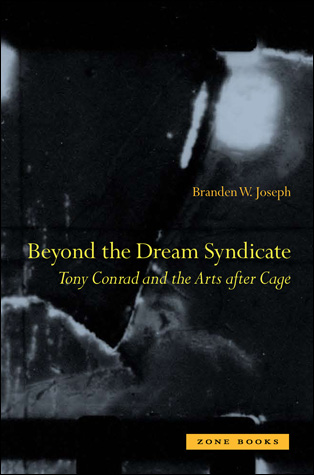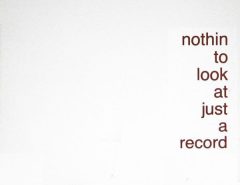BEYOND THE DREAM SYNDICATE
Tony Conrad and the Arts after Cage
Zone Books, distributed by MIT Press
ISBN-10: 1-890951-86-2
ISBN-13: 978-1-890951-86-3
480 pp. | 78 illus. | 6 x 9
Art | Film | Cultural Studies
[+info]
Tony Conrad is exemplary of the 1960s artist who remains inassimilable to canonic histories. Creator of the “structural” film, The Flicker, collaborator on Jack Smith’s Flaming Creatures and Normal Love, follower of Henry Flynt’s radical anti-art, member of the Theatre of Eternal Music and the first incarnation of The Velvet Underground, and early associate of Mike Kelley, Tony Oursler, and Cindy Sherman, Conrad has significantly impacted cultural developments from minimalism to underground film, “concept art,” postmodern appropriation, and the most sophisticated rock and roll. Yet Beyond the Dream Syndicate does not claim Conrad as a major but under-recognized figure. Rather, by drawing on Deleuzian notions of the “minor” and the Foucauldian problematization of authorship found in Conrad’s own artistic/musical project, Early Minimalism, it disperses him into an “author function.” Neither monograph nor social history, the book takes Conrad’s collaborative interactions as a guiding thread by which to investigate the contiguous networks and discursive interconnections amongst the arts of the time. Straying from Conrad for significant periods to pass through the coterminous production of Flynt, Smith, Robert Morris, and La Monte Young, and touching as well upon that of George Maciunas, Cornelius Cardew, Charlemagne Palestine, Beverly Grant, Brion Gysin, William S. Burroughs, and others, such an approach simultaneously illuminates and estranges current understandings of the period, literally redrawing the map across medium and stylistic boundaries to reveal a constitutive hybridization at the base of the decade’s artistic developments. Beyond the presentation of a relatively overlooked oeuvre, this exploration of Conrad and his milieu seeks to diagram the multiple, contestatory regimes of power simultaneously in play during the pivotal, transitional moment of the 1960s. From the sovereign authority invoked by Young’s music and Morris’s art, to the “paranoiac” politics opposed by Flynt, to the transgressive strategies Smith pursued, to the immanent control modeled by Conrad’s films, each avant-garde project examined reveals an investment within a particular structure of power and resistance, providing a glimpse into the diversity of the artistic and political stakes that continue to define our time.





Leave a Reply
Lo siento, debes estar conectado para publicar un comentario.